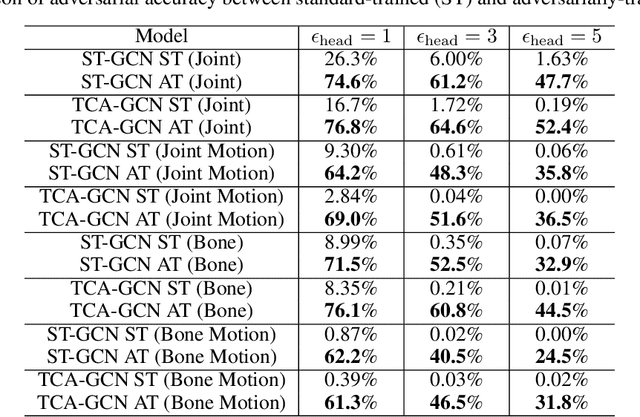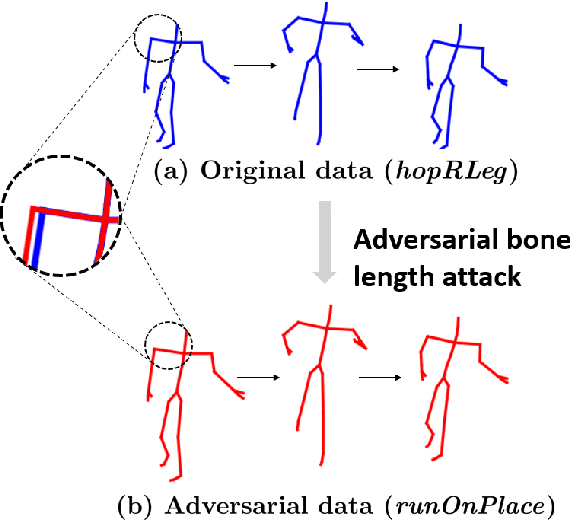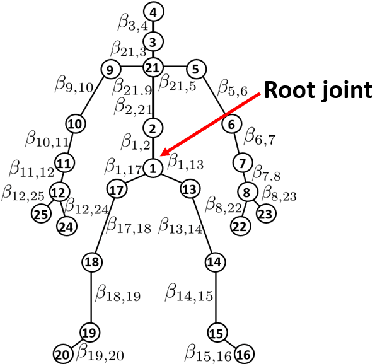Nariki Tanaka
Fourier Analysis on Robustness of Graph Convolutional Neural Networks for Skeleton-based Action Recognition
May 29, 2023



Abstract:Using Fourier analysis, we explore the robustness and vulnerability of graph convolutional neural networks (GCNs) for skeleton-based action recognition. We adopt a joint Fourier transform (JFT), a combination of the graph Fourier transform (GFT) and the discrete Fourier transform (DFT), to examine the robustness of adversarially-trained GCNs against adversarial attacks and common corruptions. Experimental results with the NTU RGB+D dataset reveal that adversarial training does not introduce a robustness trade-off between adversarial attacks and low-frequency perturbations, which typically occurs during image classification based on convolutional neural networks. This finding indicates that adversarial training is a practical approach to enhancing robustness against adversarial attacks and common corruptions in skeleton-based action recognition. Furthermore, we find that the Fourier approach cannot explain vulnerability against skeletal part occlusion corruption, which highlights its limitations. These findings extend our understanding of the robustness of GCNs, potentially guiding the development of more robust learning methods for skeleton-based action recognition.
Adversarial Bone Length Attack on Action Recognition
Sep 13, 2021



Abstract:Skeleton-based action recognition models have recently been shown to be vulnerable to adversarial attacks. Compared to adversarial attacks on images, perturbations to skeletons are typically bounded to a lower dimension of approximately 100 per frame. This lower-dimensional setting makes it more difficult to generate imperceptible perturbations. Existing attacks resolve this by exploiting the temporal structure of the skeleton motion so that the perturbation dimension increases to thousands. In this paper, we show that adversarial attacks can be performed on skeleton-based action recognition models, even in a significantly low-dimensional setting without any temporal manipulation. Specifically, we restrict the perturbations to the lengths of the skeleton's bones, which allows an adversary to manipulate only approximately 30 effective dimensions. We conducted experiments on the NTU RGB+D and HDM05 datasets and demonstrate that the proposed attack successfully deceived models with sometimes greater than 90\% success rate by small perturbations. Furthermore, we discovered an interesting phenomenon: in our low-dimensional setting, the adversarial training with the bone length attack shares a similar property with data augmentation, and it not only improves the adversarial robustness but also improves the classification accuracy on the original original data. This is an interesting counterexample of the trade-off between adversarial robustness and clean accuracy, which has been widely observed in studies on adversarial training in the high-dimensional regime.
 Add to Chrome
Add to Chrome Add to Firefox
Add to Firefox Add to Edge
Add to Edge